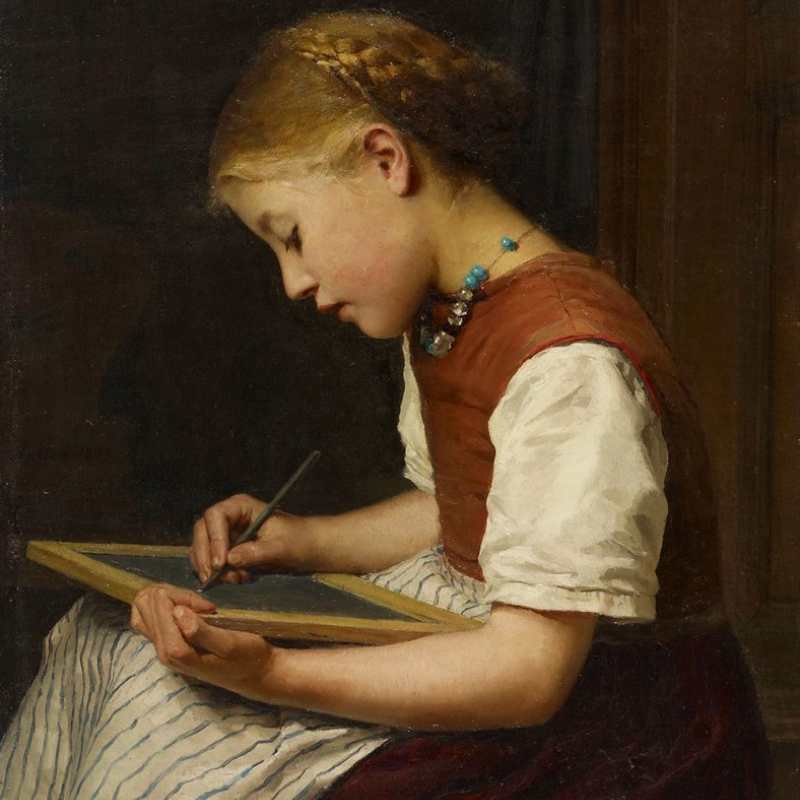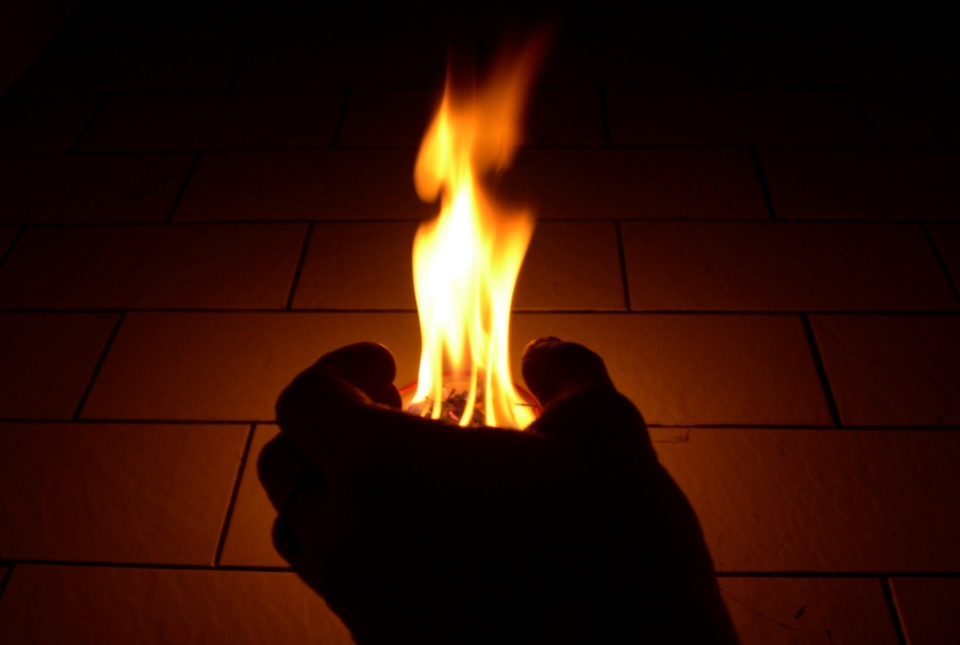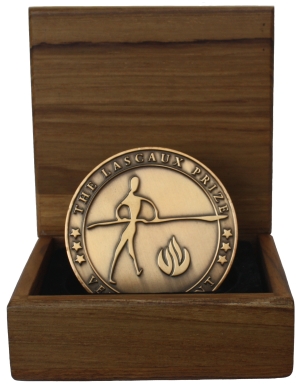Oct 28, 2018

“Schoolgirl Doing Homework,” oil on canvas, by Albert Anker, 1879.
by Jennifer Gennari
I want to be president
she says unprompted.
Her unfinished writing task
lies on the table between us.
How many bedrooms
are in the White House?
Many I say and remember
she told me about her shared
triple bunk bed
with a sister on top
and baby brother below.
She eats animal crackers
in quick careful bites.
Why? I ask. We both look
around the tutor center,
as if the answer is airborne.
Her small fingers twist
around the pencil.
Then she looks at me straight.
So people are afraid of me,
especially mean kids.
I let the silence go
as long as I can
before I ask her
to write another
sentence, pretending
it matters as much
as the one spoken.

Jennifer Gennari holds a MFA from Vermont College of Fine Arts. Her poems have appeared in GlassFire Magazine and numerous issues of the Marin Poetry Center Anthology. She is the author of My Mixed-Up Berry Blue Summer (Houghton Mifflin Books for Children, 2012), a 2013 Bank Street Best Children’s Books of the Year and American Library Association Rainbow List title. Find her @JenGenn and at jengennari.com.
Oct 19, 2018

“When the Heart is Young,” oil on canvas, by John William Godward, 1902.
by Karen Paul Holmes
How I would Change the Endings of Perfect Tragedies
I cannot watch Romeo and Juliet without hoping this time Juliet’s lids will flutter before Romeo sips his poison, nor read The House of Mirth without wanting to shake some sense into Lily, beg her to forego the excess sleeping draught so Lawrence can declare his love the next day. And when fifteen hours of Wagner’s Ring draws to a close, please Siegfried, don’t take the potion making you forget Brünnhilde. Just go somewhere safe with her forever. Yes, that would negate the enthralling Immolation Scene, where she sings the longest aria in all opera, rides her horse into your funeral pyre, and burns up Valhalla, consuming all the gods. And yes, your deaths leave humankind redeemed by love, which I’m all for. But these days, the real world has all the drama I can stand, what with lovers leaving, dogs limping, bills piling, politicians stabbing, big toes stubbing, wrinkles slicing deeper and deeper into my face, once as smooth as an apple fresh from the tree.
*
My Almost Date with a Cowboy, Polebridge, Montana
Maybe an ex-pro-hockey player, now cattle broker, doesn’t qualify as a cowboy. And his trailing my girlfriend, her husband, and me from the Bandit Saloon to the Northern Lights Bar at their country club isn’t what you’d call a date. So I guess I should call it my almost date with an almost cowboy, though he did have on needle-toed cowboy boots. He’d been watching football while throwing back beer or maybe shots all day, wore a Montana Grizzlies sweatshirt and wasn’t that cute. When he ordered a Jägerbomb so loud everyone in the fireplace-lounge could hear, we felt like crawling under the table. Plus my friends had briefly considered setting me up with him but thought better because he always strung along at least two women, one in Canada and one or possibly two here. All that said, he was the first man to flirt with this newly single woman who hadn’t dated since 1977. His being so drunk he wouldn’t remember slurring once every three minutes, You’re hot! and You’re leaving tomorrow? shouldn’t have flattered me. But it did.
“My Almost Date with a Cowboy, Polebridge, Montana” originally appeared in Kentucky Review and was reprinted in The Good Men Project. Both poems appear in No Such Thing as Distance (Terrapin Books, 2018).

Karen Paul Holmes has two poetry collections, No Such Thing as Distance and Untying the Knot. She was named a Best Emerging Poet by Stay Thirsty Media in 2016. Her work has appeared in Prairie Schooner, Poetry East, Crab Orchard Review, diode poetry journal, Poet Lore, and elsewhere. To support fellow writers, Holmes founded and hosts a critique group in Atlanta and Writers’ Night Out in the Blue Ridge Mountains.
Oct 9, 2018

“The Blue Living Room,” oil on canvas, by Carl Ludwig Jessen, 1912.
by Michael Mark
My father puts the milk carton
on the kitchen table. Declares, She bought it—
before. The two glasses tremble. I know worship
and gratitude. I know love, taught by tender example
and backs of hands, thrift.
And that I am a spoiled child at sixty
because, until three days ago, both my parents
were alive, and as long as both your parents live, old
as you get, you are not an adult.
I do the math: she has been gone exactly seventy-three hours.
The stamp on the carton warns the milk expired five days ago.
The pulmonologist alerted me it was a matter of hours.
And they were married two months shy of sixty-five years.
On special occasions, she’d put out fresh melon, cubed
and stuck with frilly toothpicks. He half fills both glasses
to make our toast, take our communion,
our poison. I know that the Bible says I owe. That
his word is law in this house. That in one night a wounded man
can wander a lifetime in a 600 foot apartment.
And how to fake swallow, then spit it out.

Michael Mark is a hospice volunteer and long distance walker. His poetry has appeared or is forthcoming in Alaska Quarterly Review, Michigan Quarterly Review, Rattle, The New York Times, The Sun, and elsewhere. His poetry has been nominated for three Pushcart Prizes and the Best of the Net.
Oct 1, 2018

“Deer in the Forest,” oil on canvas, by Franz Marc, 1913.
by Rebecca Foust
If Pastor Dale’s deer-stand was built as a place from which to squeeze a hair trigger, it also ladled up a grand view of the valley below, thick with hickory, sycamore, and elm. Pastor was a righteous man. He called the Sheriff about the untagged does in his neighbor’s back shed after finding the guts “bleeding all over the fool’s own overdrawn bank statements” in the gulley between their two lots. That’s when it began: the curtain-twitch when he passed Ray’s house, the footsteps squeaking on snow in the night outside the windows of the doublewide Pastor Dale lived in with his grandson while his daughter got things sorted out in Claysburg.
Pastor Dale was a hunter himself, but always with a license and under his quota. He taught the boy how to track so their quarry would not startle and bolt, tainting the meat, and that a botched shot was worse than coming home empty-handed. In the off-season he dragged a salt lick to the back yard and set out galvanized tins filled with sweet mash and dried corn and kept tallies of the deer and turkeys that came to feed.
The boy wasn’t much more interested in hunting then he was in playing ball, where he was like a calf let loose on the field, all folding long legs and more often than not facing away from the play. He daydreamed, read, wanted piano lessons. Everyone knew he couldn’t so much as swat a bee. He went along, yes, but used every Sunday School prayer to ask for bad aim. His grandfather knew it, and when each shot went wide merely exhaled deeply and said “did your best, no man could ask for more.”
Some farmer the century before had used his ax every twelve feet to notch limestone slabs marking Pastor Dale’s property line. Still, after the third night of hearing the crunch of footsteps on snow, he decided to post his land. It took two hundred signs, and two full days to make an island of Ray’s single acre.
Winter melted into spring, and one day the boy opened the storm door to the stoop to feel a warm breeze on his face. He looked down and, on the cinderblock stoop saw a paper bag with the top neatly folded down three times. Inside were four spotted legs, each sawn at the knee and ending in a tiny ebony hoof.
No one knows exactly what happened after that. Ray’s truck sits in his driveway, now, tires flat and water reservoir dry. The curtains in his trailer are gone. The boy’s mother fetched him back to Claysburg in time to start the new school year. Pastor Dale still fills his outdoor bins with dried corn mash, feeding the animals he’ll track come fall. His pulpit’s been empty since he stepped down. When people ask, he says it was him who did it, him who nudged his grandson’s young arm. Who spoiled his aim.
Rebecca Foust’s most recent book is Paradise Drive. Recognitions include the James Hearst Poetry Prize, the American Literary Review Fiction Prize, the Constance Rooke Creative Nonfiction Award, fellowships from MacDowell and Sewanee, and recent appointment as poet laureate of Marin County. Foust is the poetry editor and writes a weekly column for Women’s Voices for Change, and is an assistant editor reading fiction for Narrative Magazine.
Aug 25, 2018

“Fire,” photograph from the series “Playing With Fire,” by Sarah Venturi, 2009.
by Dina Peone
In the early 90s my older brother kept a cardboard cutout of Freddy Krueger in the darkest corner of his bedroom. Twice my height, this nightmare demon towered over me with a realistic grin and gaping overcooked skin. I was horrified, and yet pulled in by that festering face, those knife-fingers drawn open like a geisha fan. Why did he seem so pleased with himself? Maybe the scariest part about him was that he wore his scars like a trophy.
Whenever I walked past my brother’s open door at night and the lights were off, I knew not to look inside because even a peripheral glimpse would send me running down the stairs. I knew that the two-ply corrugated devil wouldn’t come to life but just incubate in a mischievous pose, yet it seemed that if I stared long enough he would step out of the frame with glowing yellow eyes and chase me under the covers, where I felt safest.
One night in my mid-teens, I was under the covers in my sister’s bedroom, deep asleep, while flames spread from a nearby candle. I woke coughing and saw that a wicker loveseat was engulfed before a thick curtain of smoke blinded me. I choked out a hoarse, punctuated grumble in order to rouse my sister. It sounded nothing like me; rather, it came from the belly of a beast. She was also a deep sleeper and I’m thankful that she woke immediately, because in attempting to speak through the smoke I had used the last of my lung capacity. Voiceless and blinded, we fumbled and flailed, skin slipping like chunks of cheese from our arms. I fainted and she escaped.
By the time my mother found me, I had burned almost sixty percent of my body to the third-degree. I burned to the bone in my right hand, which resulted in gangrene and amputations. My face was mostly disfigured. The first time I looked at myself nude in a full-length mirror, I said, “I look like a monster.” To this day (thirteen years later), when some children encounter me in public, they shriek and hide behind their mothers’ legs.
Before my disfigurement I had only ever heard of burn survivors in movies. Krueger was my first exposure in A Nightmare on Elm Street (1984). His burns are punishment: a product of revenge from the parents of children he has murdered. After Krueger is found not guilty of his crimes, he returns to the boiler room where he would take his victims to die. The outraged parents find him there and set the building on fire, killing him. None of this is evidenced through plot but offered as back story tucked inside a dialogue between parent and child. Before this scene, which occurs more than halfway through the film, the reasons for Krueger’s evildoing is left to the imagination. It’s easy for an audience member to associate his cruelty with his disfigurement.
Krueger is not the only burn survivor represented in films as a villain. In a recent study of 32 English-language films that were made between 1933 and 2017, the Phoenix Society found that 50% of characters whose scars were confirmed or could be assumed to be burns were good but became evil after their injury and 62% sought revenge. Just to name a few from my research: Two-Face from Batman Forever (1995); Peyton Westlake from Darkman (1990); and Cropsy from The Burning (1981). Krueger, however, is the most famous. He played a crucial role in both the shaping of my childhood perception of what it means to burn and in the drama that was—and still is—the task of growing into my second skin. Krueger taught me that a burn survivor is something to be feared and avoided as if one’s life depended on it. Such stigma only intensifies the sense of isolation that follows the touching of flames.
During the first year of my recovery, I moved swiftly through crowded streets and preferred shadowy corners. This way, I could have some measure of control over the facial contortions that occurred in reaction to my appearance. Eventually my knowing that people feared me became a source of empowerment. Last week a new acquaintance waited until I mentioned my burns before saying, “I bet there are many people who make the most stupid and ridiculous comments about your scars.” I responded, “Nobody would dare. They’re too afraid of me.”
The fearfulness of Krueger’s homicidal tendencies was apparently not enough to move audiences; he also had to serve as the embodiment of fear itself. (I think we can all agree that burning is one of the worst imaginable deaths.) And yet his burns were still not enough, so Krueger’s creators threw in knife-fingers for good measure. According to the 2010 documentary Never Sleep Again: The Elm Street Legacy, Krueger’s glove-weapon is supposed to evoke a primitive fear of animals with claws. Robert Englund, the original actor who played Krueger, considers the symbolic benefits of the addition: “The claw extends Freddy. It extends his evil, it extends his anger.” Not all burn survivors are angry thankyouverymuch and the ones who are need no makeshift appendage to express their emotions. All they have to do is stand there and be seen. Being burned is scary enough.
There is seemingly no end to the way that Krueger’s creators capitalized on costume ideas that reinforced his repulsiveness. Filmmaker Wes Craven explains how Krueger’s red and green striped sweater came to him after he read an article about the physical difficulty in seeing the two colors side by side. “I literally made him into a sort of painful optical effect,” says Craven, who is either ignorant of the fact that burn survivors don’t need tacky sweaters to achieve a painful optical effect, or he’s insensitive to our struggle for beauty and sustained face-to-face interactions.
If I seem bitter, it’s because Krueger tells me I should be. Although Krueger’s burns are supplemental to his heinous history, their presence seems to justify his haunting behavior in the film. One looks back on the first scene, wherein he fashions his glove-weapon, with the understanding that maybe Krueger wouldn’t have taken his violence to the next level if he hadn’t been incinerated. This subtext lends itself to the notion that burn survivors should be so full of rage that it’s almost a natural response to transfer their suffering to others. I wonder: when strangers first judge my character, do they assume that pissing me off will lead to their disembowelment? Maybe not, but I’d guess that ever since the film hit box offices people have associated a history of burning with a future of wrath at least on a subconscious level.
How much ethical consideration is given to the crafting of a Hollywood villain? Krueger’s makeup artist relied on a medical textbook in which actual bodies like mine appeared. It seems that horror-industry producers care more about the aesthetic success of a cliché and less about a cliché’s rippling consequences on the collective psyche.
A burn survivor is always a creature in the making. The worse the burn, the more reconstructive surgeries are required for the regaining of function and cosmetic satisfaction. As an acute burn survivor navigates the public eye, they must think of their appearance as both in flux and irreparably hideous. If, when I first examined my scars, I saw myself as a monster, then that is due in part to the revulsion that A Nightmare on Elm Street suggests people should experience in response to burns. Look for yourself at the number of cases in which child burn survivors are taunted by bullies with Krueger’s name. He branded so many children with a vision of loathing and the disgraceful vocabulary to describe it. It is no wonder why burn survivors were so offended after the film’s release; a bad reputation is everlasting.
I won’t pretend that Krueger was the first example to teach that fire and enemies should go together. One glance at history will remind us that burning is reserved for individuals whose actions undermine collective power and safety (e.g. Joan of Arc, victims of the Salem witch trials, and other heretics who were burned at the stake). It’s not Krueger’s fault that in the deep seat of our minds there forms the vivid picture of a mob carrying torches to the homes of unwanted anomalies. An adversarial stance toward the disfigured is practically an evolutionary response: we are biologically programmed, for the survival of our species, to gravitate toward the beautiful and to banish the ugly. As long as there have been stories, the beautiful has been paired with the good and ugly with evil. Even if the film and its sequels could be magically erased, the psychological foundations for the creation of an icon like Krueger would remain firmly in place. My complaints are ash in the wind. It feels good to scatter them.
As I got older I felt increasingly silly for running past my brother’s door, so I would pause for a moment and test the cardboard fiend daringly. If my eyes didn’t play tricks on me—casting a shimmer along his stainless steel knuckles—I would grow brave and inch into the dark. I would make it right up to the fibers in his red and green striped sweater, reach my trembling fingers around his flat waist, and pull back and forth to ensure he was fake. Once, the display tipped over on me and I fled screaming. Right now I’d gladly go back and let that two-dimensional fool lie on me. Oh Freddy, I’d say. I know you’re not real. You weigh practically nothing.
Dina Peone is a native of Saugerties, New York and a graduate of the University of Iowa’s Nonfiction Writing Program. She is at work on a memoir about her transmutation by fire.








